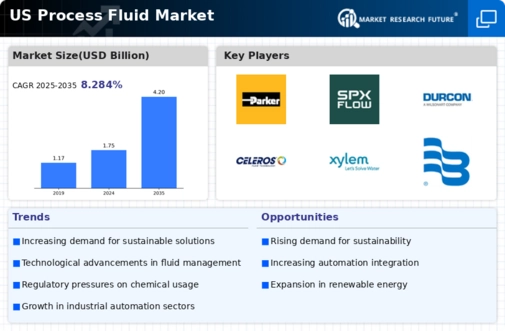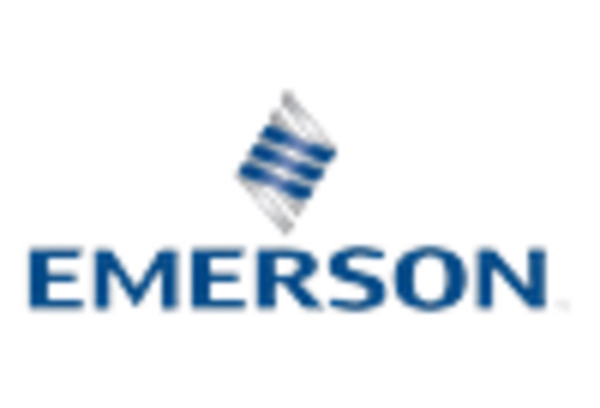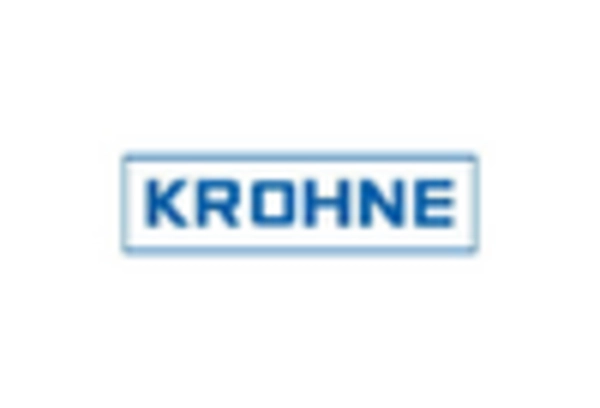Growth in Renewable Energy Sector
The renewable energy sector is emerging as a significant driver for the process fluid market. As the US shifts towards cleaner energy sources, there is a growing need for specialized process fluids that can operate efficiently in renewable energy applications. This includes fluids used in solar thermal systems and bioenergy production. The renewable energy market is projected to grow at a CAGR of around 8% in the coming years, which could lead to increased demand for process fluids tailored for these applications. The process fluid market is likely to benefit from this trend, as manufacturers seek to develop innovative solutions that support the transition to renewable energy.
Rising Demand for Energy Efficiency
The process fluid market is experiencing a notable increase in demand for energy-efficient solutions. Industries are increasingly focusing on reducing operational costs and minimizing energy consumption. This trend is driven by regulatory pressures and the need for sustainable practices. According to recent data, energy-efficient process fluids can reduce energy consumption by up to 30%, which is a significant incentive for manufacturers. As companies strive to meet environmental standards, the adoption of energy-efficient process fluids is likely to grow. This shift not only enhances operational efficiency but also aligns with broader sustainability goals, thereby propelling the process fluid market forward.
Regulatory Compliance and Safety Standards
Regulatory compliance is a critical driver for the process fluid market. Industries are required to adhere to stringent safety and environmental regulations, which necessitate the use of compliant process fluids. The increasing focus on workplace safety and environmental protection is pushing manufacturers to invest in fluids that meet these standards. Non-compliance can result in hefty fines and operational disruptions, making it imperative for companies to choose the right process fluids. As regulations evolve, the process fluid market is expected to expand, offering products that not only comply with current standards but also anticipate future regulatory changes.
Technological Integration in Manufacturing
Technological integration within manufacturing processes is significantly influencing the process fluid market. The adoption of automation and advanced monitoring systems allows for better control and optimization of fluid usage. This integration can lead to a reduction in waste and improved product quality. For instance, smart manufacturing technologies can enhance the efficiency of process fluids, potentially increasing their effectiveness by up to 25%. As industries embrace these technologies, the demand for high-performance process fluids is expected to rise, thereby driving market growth. The process fluid market is likely to see innovations that cater to these technological advancements.
Expansion of the Chemical Processing Sector
The chemical processing sector plays a crucial role in the growth of the process fluid market. With the increasing production of chemicals, there is a corresponding rise in the demand for specialized process fluids that can withstand harsh conditions. The sector is projected to grow at a CAGR of approximately 4.5% over the next few years, indicating a robust market for process fluids. This expansion is driven by the need for innovative solutions that enhance productivity and safety in chemical manufacturing. As the sector evolves, the process fluid market is likely to adapt, offering tailored solutions to meet the specific needs of chemical processors.

















Leave a Comment